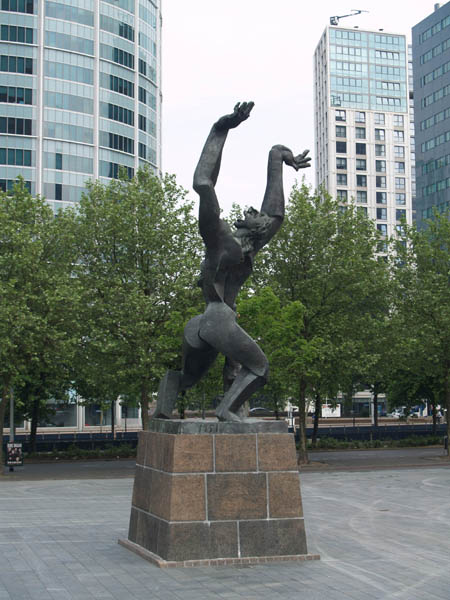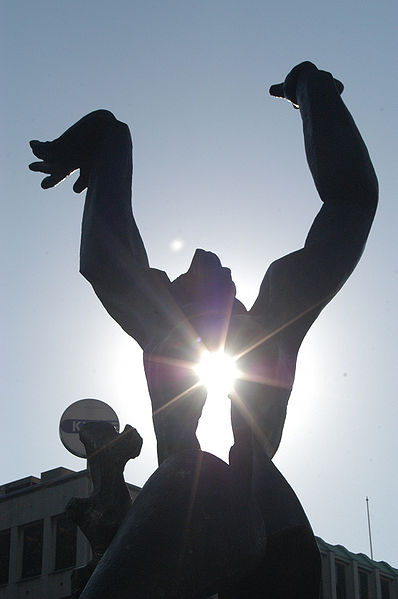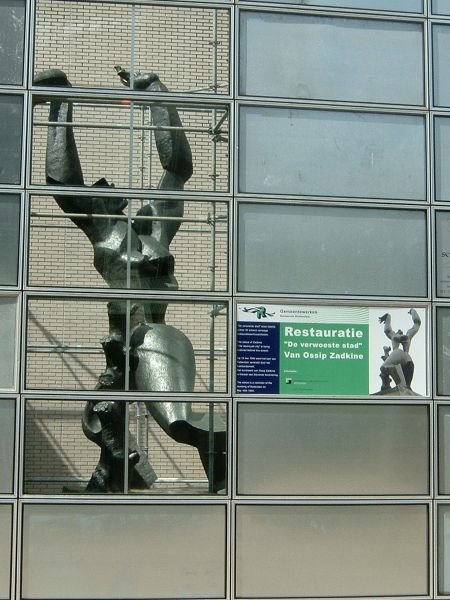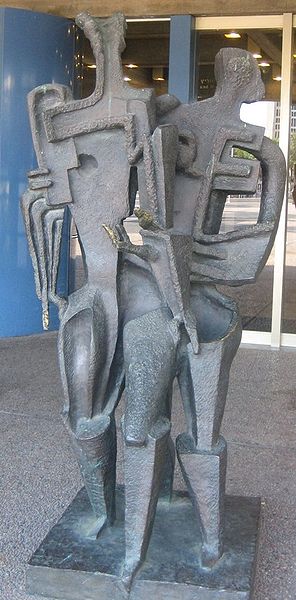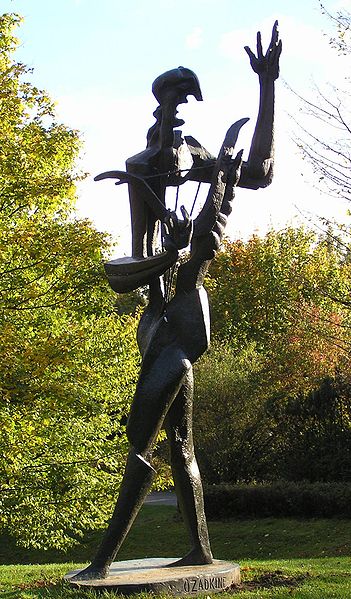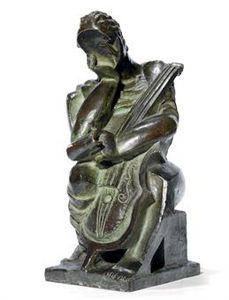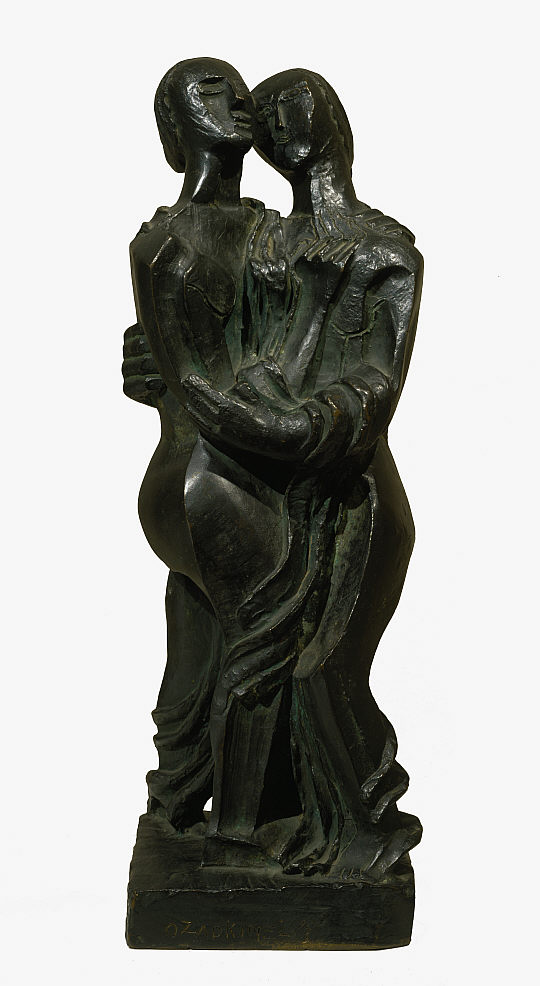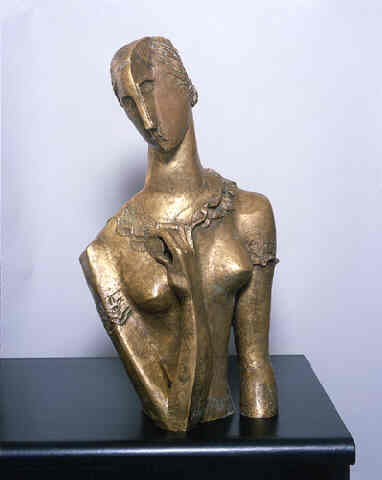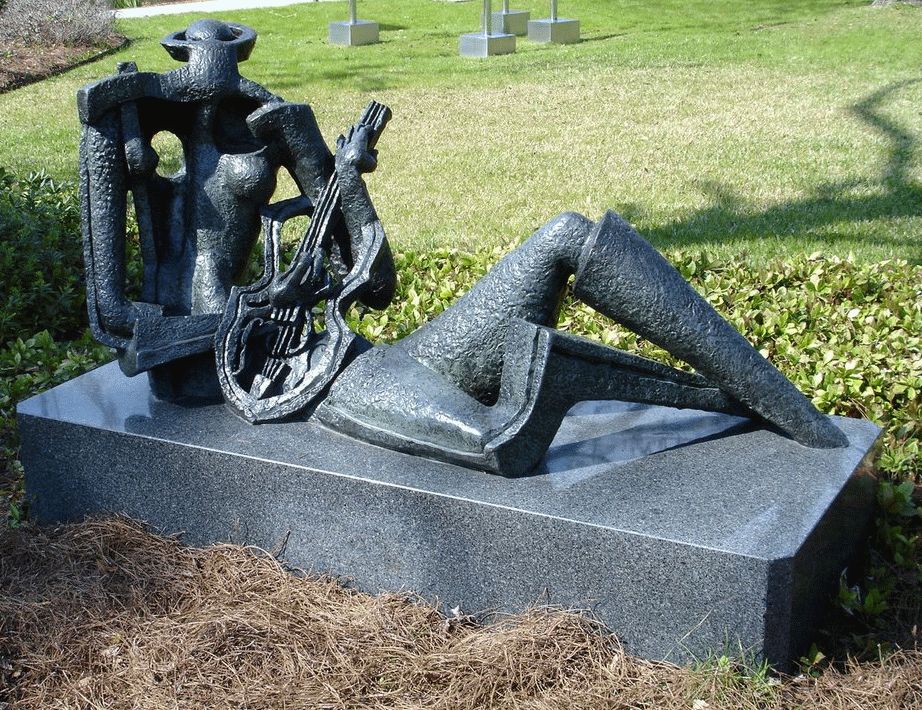<Back to Index>
- Chemist André Louis Debierne, 1874
- Sculptor Ossip Zadkine, 1890
- General of the Austrian Army Ludwig August Ritter von Benedek, 1804
PAGE SPONSOR

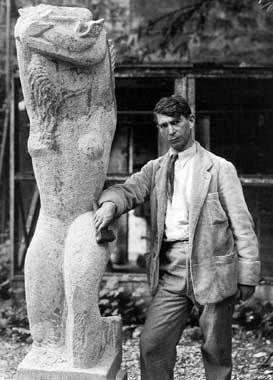

Ossip Zadkine (Russian: Осип Цадкин; July 14, 1890 – November 25, 1967) was a Belarusian born artist who lived in France. He is primarily known as a sculptor, but also produced paintings and lithographs.
Zadkine was born as Yossel Aronovich Tsadkin (Russian: Иосель Аронович Цадкин) in Vitebsk, Belarus, then part of the Russian Empire. His father was Jewish and had converted to the Russian Orthodox religion; his mother was of Scottish ancestry.
After attending art school in London, Zadkine settled in Paris about 1910. There he became part of the new Cubist movement (1914 - 1925). He later developed his own style, one that was strongly influenced by African art.
Zadkine served as a stretcher - bearer in the French Army during World War I, and was wounded in action. He spent the World War II years in America.
His best known work is probably the sculpture "The Destroyed City"
(1951 - 1953), represents a man without a heart, a memorial to the destruction of the center of the Dutch city Rotterdam in 1940 by the German Luftwaffe.
Zadkine
married, in 1920, Valentine Prax (1899 - 1991), an Algeria born painter
of Sicilian and French Catalan descent. They had no children. The
artist's only child, Nicolas Hasle (born 1960), was the result his
affair with a Danish woman, Annelise Hasle. Since
2009, Hasle, a psychiatrist, who was acknowledged by the artist and had
his parentage legally established in France in the 1980s, has been
party to a lawsuit with the City of Paris to establish his claim to his
father's estate.
